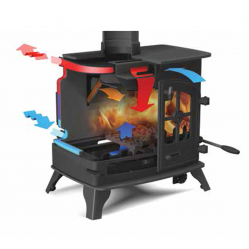Boiler Stoves > Wood Burning Boiler Stoves

Wood Burning Boiler Stoves
Perhaps one of the cleanest, efficient and environmentally friendly ways of heating your home, wood burning boiler stoves are a great way of reducing your carbon footprint and relying less on the mains supply for heating and hot water. These stoves are dedicated for burning wood only and produce just as much heat and hot water as their multifuel equivalents. We supply a large range of wood burning boiler stoves from all the best manufacturers and in a wide variety of sizes, outputs and styles to suit your requirements. As with any boiler stove, it is important to get the right size and output for the room and number of radiators and/ or hot water required. Incorrect sizing will result in reduced efficiency as the stove may be running too hot and therefore produce too much heat in the room, or too low and not enough heat is produced.